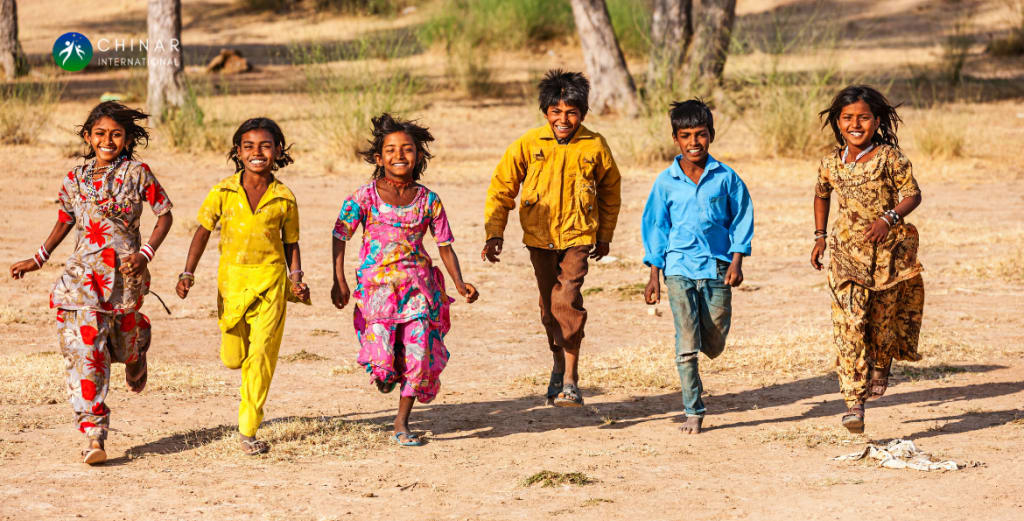Child Rights Violation: 8 Major Challenges We Need to Address Right Now
The violation of child rights is a critical issue in today's world, and it is of utmost importance that these rights are respected, upheld, and protected.

A safe childhood is a human right. But despite the world's progress in various fields, millions of children are still forced to live without their fundamental rights. Child rights assume great significance in a civilized society because, like adults, children have the right to safety, security, and opportunities to grow to their full potential.
The United Nations Convention on the Rights of the Child states that children are entitled to special protection and assistance because they are considered vulnerable. Millions of children across the world face abuse, exploitation, and discrimination. Children are often subject to sexual exploitation, child labor, slavery, drug trafficking, prostitution, and armed conflict. These hostile environments impact a child's well-being and development.
Children are the future of this world. However, they are vulnerable and need protection.
The Genesis of the Child Rights Movement
In 1970, world leaders started a movement to officially recognize that children had equal human rights – the same cultural, civic, economic, political, and social rights – as adults. These leaders recognized the need for a universal set of parameters and an international ethical and legal framework to protect these rights. They wanted to ensure that the basic needs of children would be met and that every child would receive equal opportunities to maximize their full potential.
The leaders knew that they needed to build something concrete on previously adopted declarations and covenants because they did not do anything for the benefit of the children. However, it took a decade more to negotiate the Convention on the Rights of the Child (CRC).
What is the Convention on the Rights of the Child (CRC)?
Adopted by the United Nations General Assembly on November 20, 1989, the Convention on the Rights of the Child (CRC) is an international treaty that sets out the civil, political, economic, social, and cultural rights of children.
The 54-article treaty defines a child as any person under 18 and recognizes that all children have inherent dignity and are entitled to the same rights and protections. One hundred ninety-six countries have ratified the treaty to date. The leaders of these countries took a pledge to hold themselves accountable for protecting every child's right to live and thrive with dignity and without discrimination.
The CRC is the most widely ratified human rights treaty in the world. It is monitored by an independent team of experts called the UN Committee on the Rights of the Child to record and analyze the progress made by the countries in fulfilling their obligations under the treaty.
Child Rights Protection: A Road with Multiple Obstacles
Despite bills and laws, the violation of child rights is rampant. The government and authorities must take aggressive corrective measures to provide children with a safe and secure childhood, free from exploitation, abuse, and discrimination. Despite numerous efforts to protect children's rights, several significant challenges remain in preventing their violation.
Let's discuss some of the most significant challenges and how to overcome them:
1. Child Labor and Exploitation
According to the International Labour Organization, child labor is 'work that is mentally, physically, socially or morally dangerous and harmful to children.' It is any work that interferes with education, forcing them to leave school prematurely, or eats into their school attendance with excessively long and heavy work.
There has been a tremendous increase in child labor in the last decade and the pandemic has exacerbated the situation. Child labor has reached every corner of the world. Children can be found working in the unorganized sector, workshops, mines, and in the service sector at times as domestic help, whether paid or unpaid.
At a very young age, children are meant to receive a formal education. Many children work as shoe-shine boys, rag pickers, and even beggars. This can have a detrimental impact on children's education, health, and psychological well-being.
Children who work long hours in hazardous conditions or are forced to work against their will are at risk of physical and psychological harm. Governments, employers, and civil society must work together to eliminate child labor and ensure children grow up free from exploitation.
2. Poverty
One of the biggest challenges that promulgates the violation of child rights is poverty. Children living in poverty often struggle to find necessities such as food, shelter, and clothing, making them prone to exploitation and abuse. Many are sold as bonded labor by their parents or relatives due to poverty. Child labor robs their access to education and leads to poor health and nutrition.
3. Child Marriage
Child marriage is an egregious violation of fundamental human rights, yet it persists in many parts of the world. The significant challenges that prevent child marriage from being eradicated are a lack of awareness and education, poverty, cultural tradition, and gender inequality. Raising awareness of the dangers of child marriage is essential, as it can lead to serious health consequences, a loss of education, and an increased risk of domestic violence.
Education is a powerful tool to combat child marriage, as it can provide knowledge, skills, and economic opportunities to both girls and boys. Ending poverty is also essential in eliminating child marriage, as it can provide access to food, shelter, and resources that empower individuals to make life choices.
4. Lack of Education and Awareness
One of the significant challenges that contributes to the violation of child rights is the lack of education and awareness. Education is a powerful tool that can equip children with the knowledge and skills needed to understand their rights and the confidence to express them.
By creating programs that are accessible and open to all, children and parents alike can be made aware of their rights and the importance of protecting them. This can lead to a greater understanding of the areas where children's rights are at risk of being violated and can empower communities to protect these rights. Furthermore, awareness campaigns and public announcements can help spread essential knowledge and understanding of the issue.
5. Child Trafficking
Child trafficking is one of the most severe violations of child rights, as it robs a child of their safety, security, and sense of belonging. Unfortunately, this problem is far too common. According to the Ministry of Women and Child Development 19,223 women and children were trafficked in 2016. Child trafficking cannot be addressed by one single country or organization alone. It requires collaboration between governments, organizations, and individuals to tackle the issue effectively.
To effectively prevent child trafficking, governments must take the initiative to protect their citizens, especially children. Laws and regulations must be enforced to punish perpetrators and ensure that children remain safe. Also, social services should be available to assist those that are already victims of trafficking.
6. Conflict and War
Conflict and war can also contribute to the violation of children's rights. It is heartbreaking to think of the countless children worldwide whose rights are violated due to conflict and war. Children in conflict-affected areas are at risk of recruitment into armed groups, sexual violence, and other forms of exploitation and abuse. In addition, displacement and loss of family members can leave children vulnerable and in need of protection. The trauma of physical and psychological harm can leave a profound and lasting impact.
Many techniques have been developed in the last two decades to help victims of conflict. Social workers utilize targeted interventions to address war’s effects on children, the horrific conditions they are subjected to, the question of rehabilitation, and how to make the experience of being in a war-conflicted zone less damaging.
7. Corruption and Ineffective Law Enforcement
A world where all children are treated with respect and dignity is an important and worthwhile goal. Yet, two significant challenges prevent fully realizing this right: corruption and ineffective law enforcement.
Corruption has been a long-standing problem with devastating results, particularly when protecting children's rights. Corruption can allow perpetrators to evade justice. In many countries, bribes can be used to escape punishment after breaking the law and that lets the abusers go unchecked.
Ineffective law enforcement can further contribute to the violation of child rights by failing to investigate, document, and prosecute cases properly. Many patients go unprosecuted, and perpetrators roam free. When the law is not adequately enforced, it is difficult to protect the rights of vulnerable groups such as children. This can create an environment of impunity, where children are at increased risk of exploitation and abuse.
8. Discrimination and Prejudice
It is essential to realize that all children-- regardless of race, ethnicity, gender, religion, or socioeconomic background-- have the right to a safe and prosperous future. However, many children are subject to discrimination based on their caste, race, ethnicity, class, and religion.
For example, girls are more likely to be subjected to gender-based violence and discrimination, while children with disabilities are at greater risk of neglect and abuse. It is necessary to create an inclusive society where children are supported and nurtured instead of judged and excluded based on their differences.
Conclusion
The violation of child rights is a critical issue in today's world, and it is of utmost importance that these rights are respected, upheld, and protected. Despite many efforts taken to protect child rights, some significant challenges include poverty, lack of education and awareness, child trafficking and sexual abuse, political instability, conflict and violence, and limited access to justice.
Practical measures such as strengthening laws and policies, improving access to education and healthcare, enforcing strict regulations, and promoting child-friendly justice systems can play a crucial role in preventing the violation of child rights. It will ensure that all children grow up safe, healthy, and free from exploitation and abuse.
About the Creator
CHINAR International
CHINAR was launched in 2003 in northern Virginia for the rehabilitation of orphans and vulnerable children in conflict areas. Between 2004 and 2011, CHINAR successfully ran a pilot project called CHINAR Home in Kashmir India






Comments
There are no comments for this story
Be the first to respond and start the conversation.